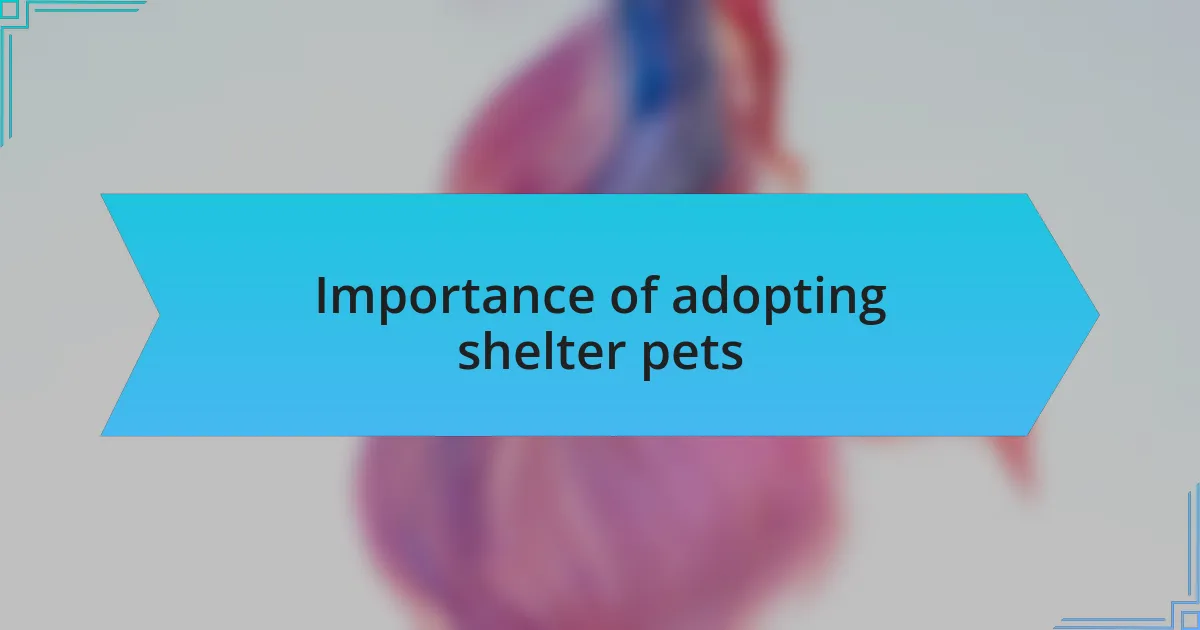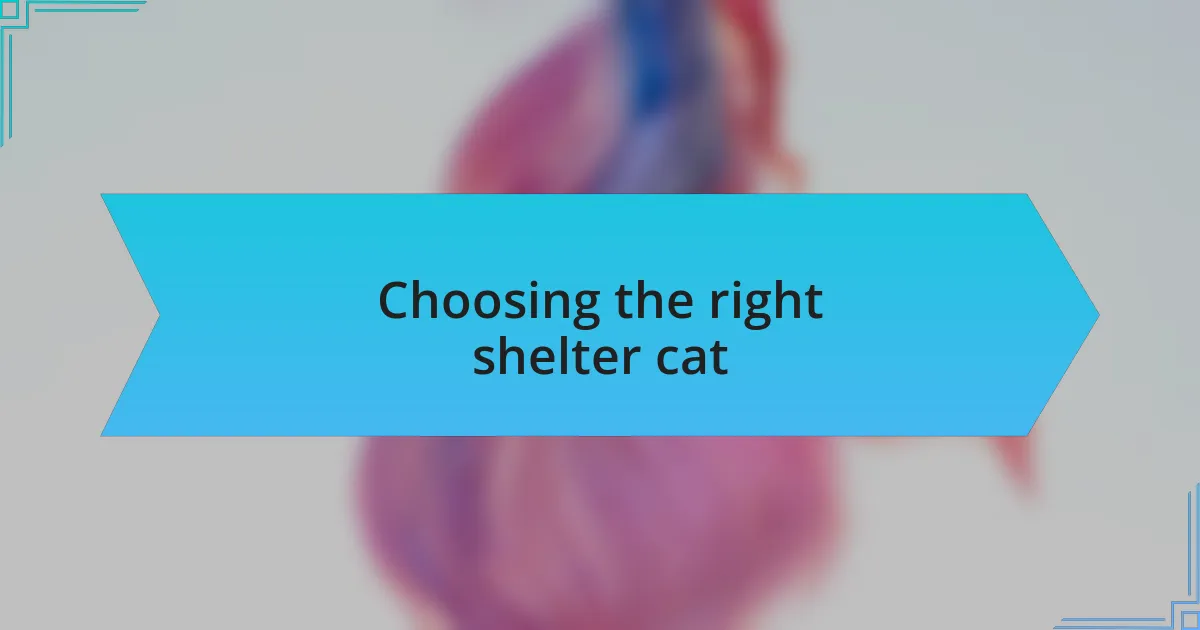Key takeaways:
- Animal protection societies advocate for the welfare of neglected or abandoned animals and educate the community on responsible pet ownership.
- Adopting shelter pets saves lives and alleviates the overpopulation crisis, offering unique personalities and enriching relationships for families.
- Choosing the right shelter cat involves assessing one’s lifestyle and the cat’s energy level, and spending time with different cats can help find a suitable match.
- New cat owners should create a safe environment, engage in playtime, and establish consistent routines for feeding and litter habits to foster a strong bond with their pets.

Understanding animal protection society
Animal protection societies play a vital role in advocating for the welfare of animals, particularly those that are neglected or abandoned. I remember volunteering at one such organization; witnessing the transformation of a shy shelter cat into a loving companion reaffirmed my belief in their mission. Have you ever thought about how a safe environment can change an animal’s life?
These organizations not only rescue animals but also educate the community about responsible pet ownership. When I attended an outreach event, I saw families engage with the staff, learning about the importance of spaying and neutering. Isn’t it inspiring to think that a simple conversation could influence someone’s decision to adopt rather than shop?
Moreover, the emotional connections formed between volunteers and animals are profound. I’ve had days when a single purr from a cat made all the hard work feel worthwhile. Can you imagine the satisfaction of knowing you played a part in giving an animal a second chance?

Importance of adopting shelter pets
The significance of adopting shelter pets cannot be overstated. Each time I visit a shelter, I am reminded of the countless animals waiting for a loving home. Have you ever looked into the eyes of a shelter cat and felt an instant connection? It’s remarkable how these animals, often overlooked, possess so much love to give.
Adopting from a shelter not only saves a life but also alleviates the overpopulation crisis that many shelters face. I’ve seen firsthand the heartbreaking reality of overcrowded facilities, where animals are often surrendered due to limited resources. Isn’t it heartbreaking to think that a simple decision to adopt can drastically change this scenario for a deserving pet?
In my experience, shelter pets often come with unique personalities and stories that enrich our lives. Each interaction with a rescue cat can lead to surprising moments of joy; I once adopted a timid tabby who later became my most playful companion. Could there be anything more rewarding than witnessing a once-uncertain animal blossom into a cherished family member?

Choosing the right shelter cat
Choosing the right shelter cat involves understanding your lifestyle and the personality of the cat. When I adopted my first shelter cat, I thought I wanted a tiny kitten, but I found myself drawn to an older cat who sat quietly observing everything. That calm demeanor was exactly what I needed after a long day at work.
It’s also important to consider the energy level of a cat. Do you want an adventurous feline or a laid-back lap warmer? I once met an energetic ginger who loved to play fetch, which was quite a surprise. I enjoy having someone to engage with, but if you prefer a quieter companion, look for those who are more reserved.
Don’t hesitate to spend time with a few different cats before making your decision. During my visits, I found that one particular cat would come up to me and purr the moment I sat down. That interaction spoke volumes about her desire for companionship, and I knew instantly that we were meant to be together. Each cat has its own charm, waiting to discover if there’s a connection can lead to a beautiful bond.

Tips for new cat owners
One of the first things I learned as a new cat owner is the importance of creating a safe, welcoming environment. When I brought my shelter cat home, I quickly realized how vital it was to provide places for her to hide and explore. Cats love to feel secure, so I made sure to set up cozy spots with blankets and boxes where she could retreat when feeling overwhelmed.
Engaging your cat with playtime is another crucial aspect of cat ownership. I remember my first attempts with a simple feather toy; it was like flicking a switch for my cat, who transformed from a shy observer into a playful acrobat. Spending just a few minutes each day in interactive play not only fosters a stronger bond but also keeps their minds stimulated and bodies active.
Don’t underestimate the power of routine when it comes to feeding and litter box habits. I discovered that my cat thrived on consistency, especially in her feeding schedule. At first, I stuck to a loose schedule, but she quickly taught me that she preferred her meals at the same time each day. Observing those little quirks is part of the joy of cat ownership—it can really make the relationship feel truly special.